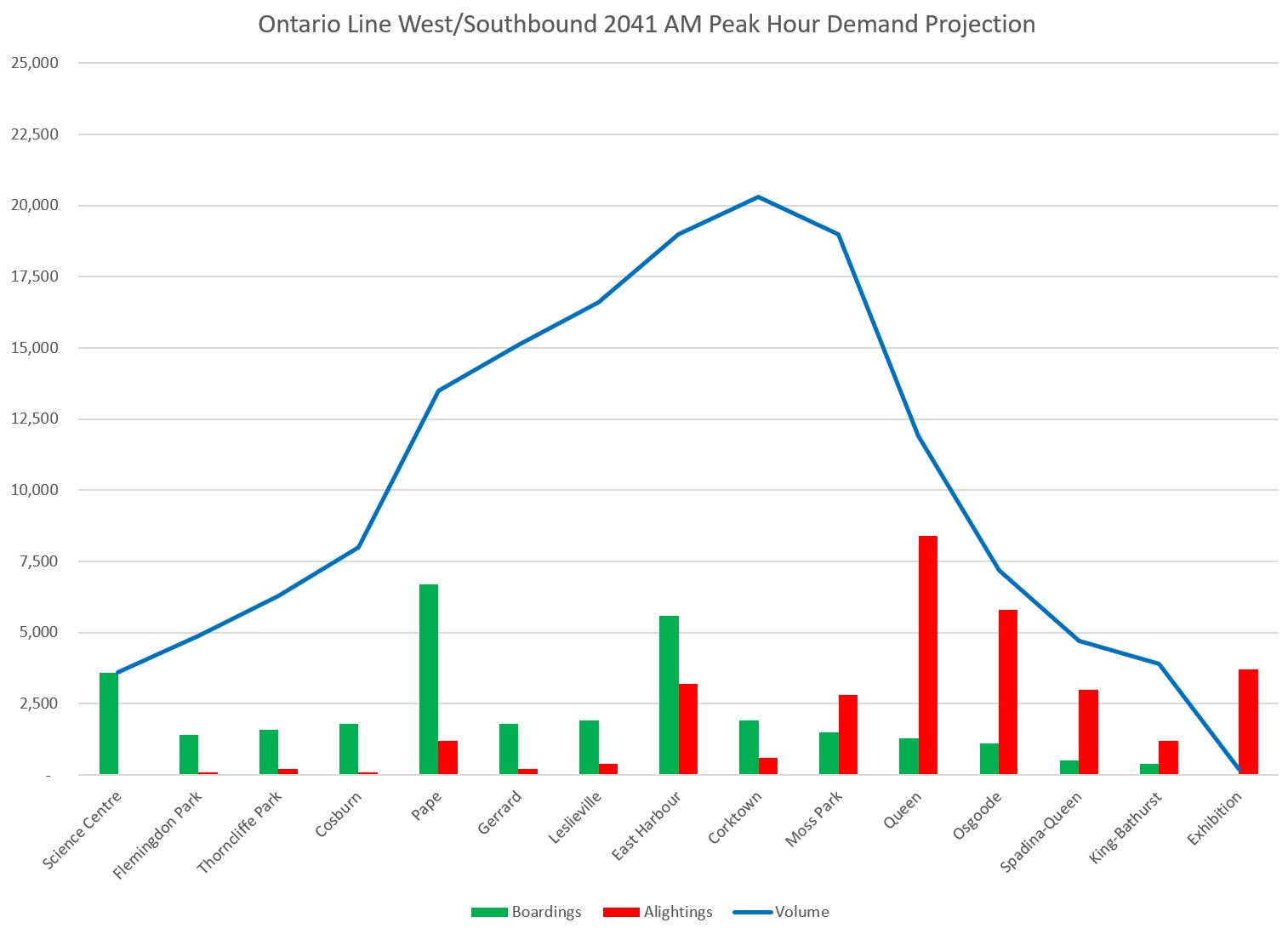I agree. Which is why I used 1,200 as my lower limit on the subway calculation. Even with 1,200 per train, the capacity on the Yonge subway is 24,000 pphpd which is the same as the theoretical max of the OL at the opening of the line with 80 m long trains.
My point again is that Metrolinx is planning for a line that is set to be full in 10 years of opening (2041). Sure we can use longer trains and get another 25% capacity to 30,000 pphpd, but that's it, that's our upper limit. What do we do when we reach 30,000? Build another "relief" line for the Ontario Line?
For comparison, the Yonge subway can handle 48,000 passengers at the 90 second headways once ATC is installed and current train size which is a lot more capacity than the Ontario Line. TTC was also looking at adding a 7th car, smaller than the usual cars to get an extra ~8% - 10% of capacity making the theoretical maximum as almost 52,000.
We're building this much capacity in Scarborough and Yonge North but somehow the highest ridership subway currently under construction gets a "light" metro with a gimped maximum capacity.
Again, I'm not against building the Ontario Line as a relief line for Yonge-Bloor station is extremely necessary, I'm only pointing out the massive flaw in this design, and also pointing out the hypocrisy of the suburbs getting the high capacity heavy subway while the core downtown is getting the light subway.
